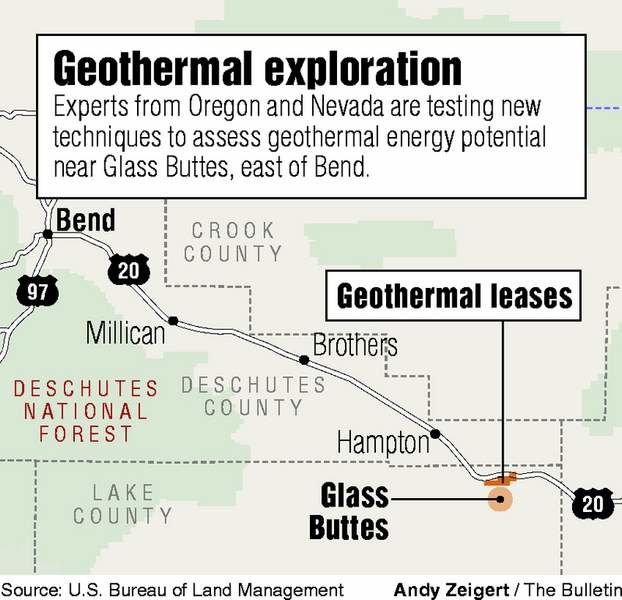Seeking geothermal energy sources
Published 4:00 am Monday, February 28, 2011

- Seeking geothermal energy sources
About 80 miles east of Bend, researchers hope to combine high-tech imaging and scientific survey techniques in an innovative way to help identify new sources of geothermal energy.
And if all goes well, they might even find enough geothermal energy to power homes and business.
The work began at Glass Buttes, located west of the U.S. Highway 20-U.S. Highway 395 junction, last year, according to project summaries.
It involves a professor from Oregon State University, the chief scientist at the Oregon Department of Geology and Mineral Industries and a staff geologist from Nevada-based Ormat Technologies, the geothermal power plant company paying about half the $8.5 million project costs. A grant from the American Recovery and Reinvestment Act pays the rest.
Ormat has leased the geothermal rights at Glass Buttes, but it’s not the first to explore the area.
In the late 1970s, Phillips Petroleum conducted large-scale drilling that today would be too expensive, even if a company could get permits, according to a fourth-quarter 2010 project summary on the Recovery Act website.
While the company did not find flowing water, its tests showed areas that deserved further testing.
Since then, the technology for generating electricity from geothermal sources has improved, and Ormat, which has been in the industry since 1965, hopes the research will generate enough geothermal energy to sell to a utility.
“The project’s size has the potential to power a significant percentage of residential needs in Central Oregon,” according to project information from the U.S. Energy Department’s Geothermal Technologies Program.
Geothermal exploration can be expensive, so the Recovery Act provided about $100 million for projects that use innovative techniques to help reduce the up-front risks. Funding for the geothermal testing being conducted outside Newberry National Volcanic Monument comes from the same program.
Separately, the U.S. Department of Energy on Thursday OK’d a $96.8 million Recovery Act loan guarantee to build a 23-megawatt geothermal power plant at Neal Hot Springs in Malheur County.
At Glass Buttes, the work is more research and development, said Patrick Walsh, Ormat staff geologist. Building a power plant remains years away, if at all.
Researchers hope to combine data collected using different methods to create structural models to identify the most likely locations of the hot fluid below ground that may generate electricity.
To get high-resolution images of the surface, they gathered data using lidar, which stands for light detection and ranging, according to the Oregon Lidar Consortium.
It’s similar to radar, radio detection and ranging, and to sonar, sound detection and ranging, according to the U.S. Geological Survey.
But lidar uses an aircraft-mounted laser, which bombards the surface with light pulses and generates enough data to generate images showing ground vegetation, stream channels and faults, which might indicate geothermal sources. The detail in lidar images is light years ahead of regular aerial photos.
Researchers have combined lidar data with gravity and magnetic measurements, which provide information about the rock structure below ground, and aerial surveys of mineral layers, which might indicate geothermal, according to project summaries.
They will bring all the data together to locate the best spot for Ormat to drill two 3,000- to 4,000-foot test wells in the summer. If those results look good, the company plans to evaluate the development potential, according to the summary.






